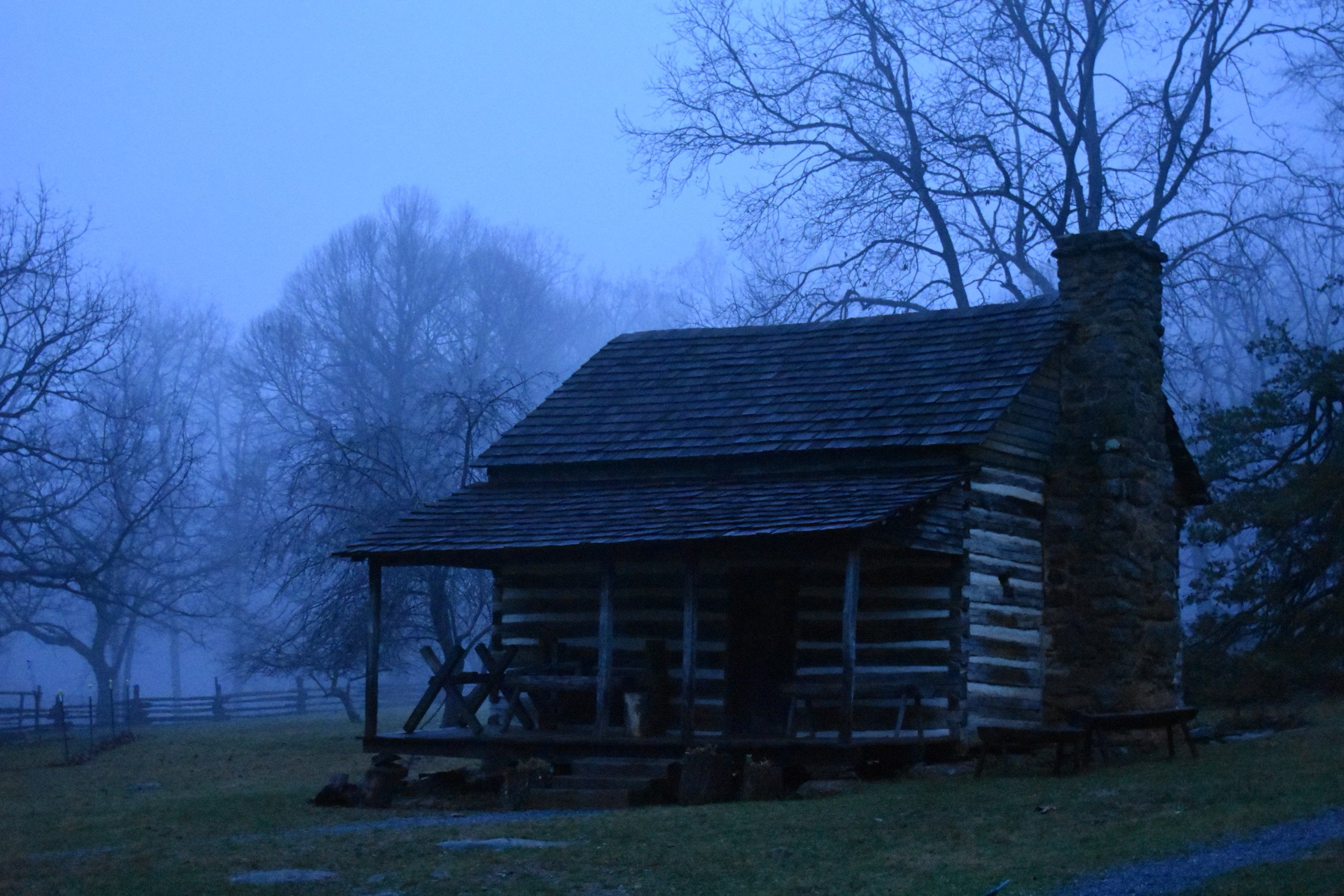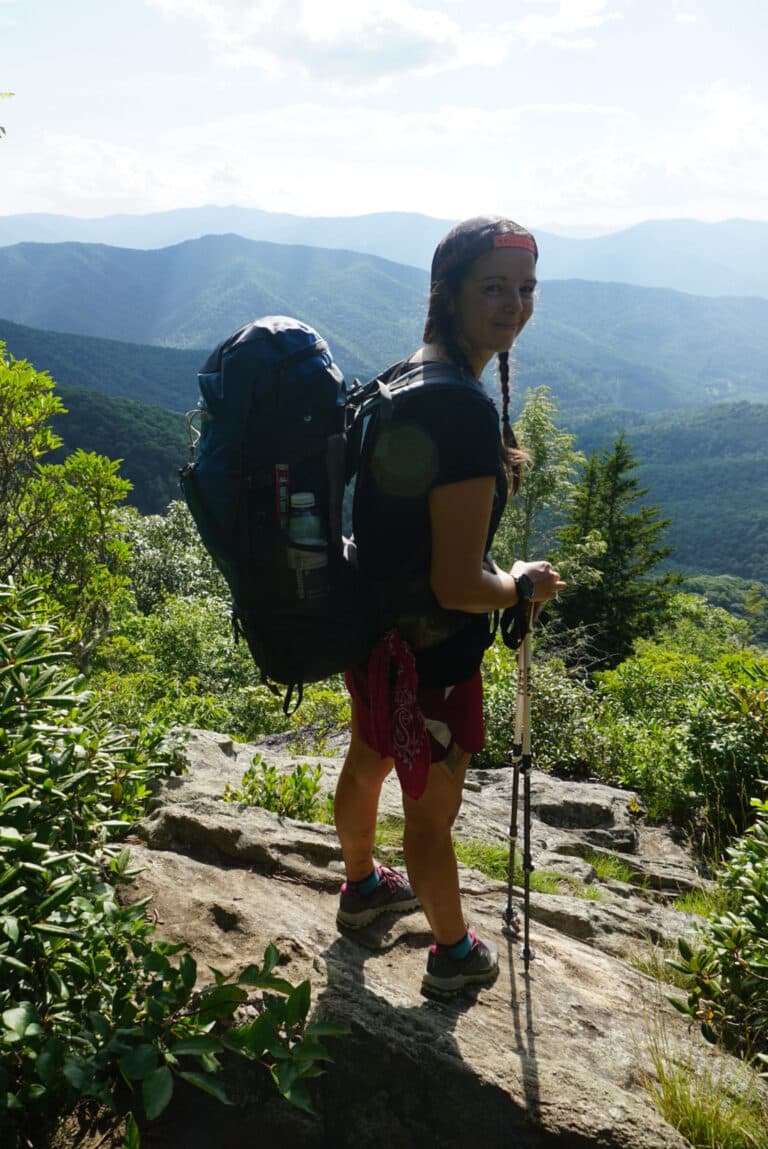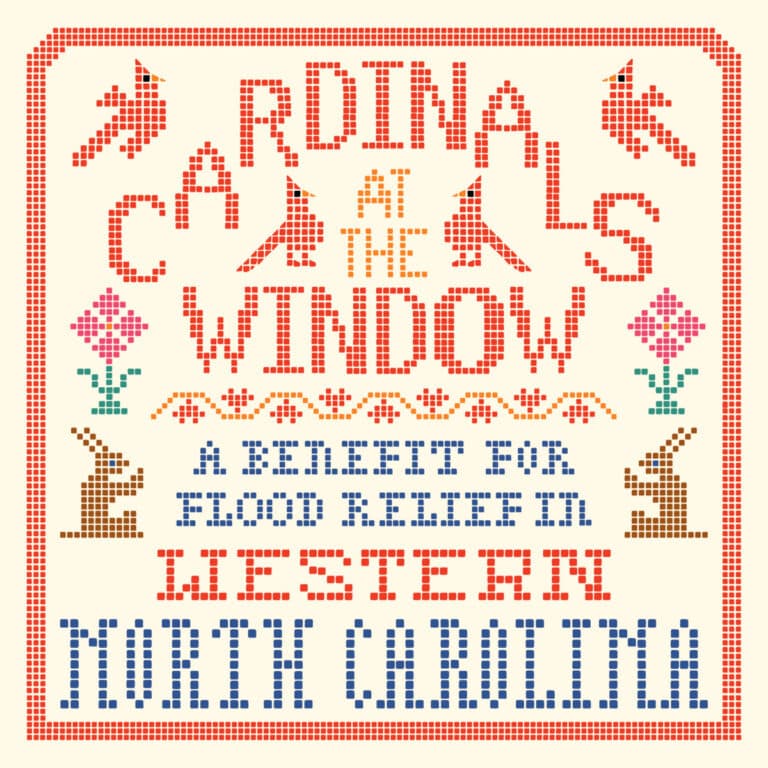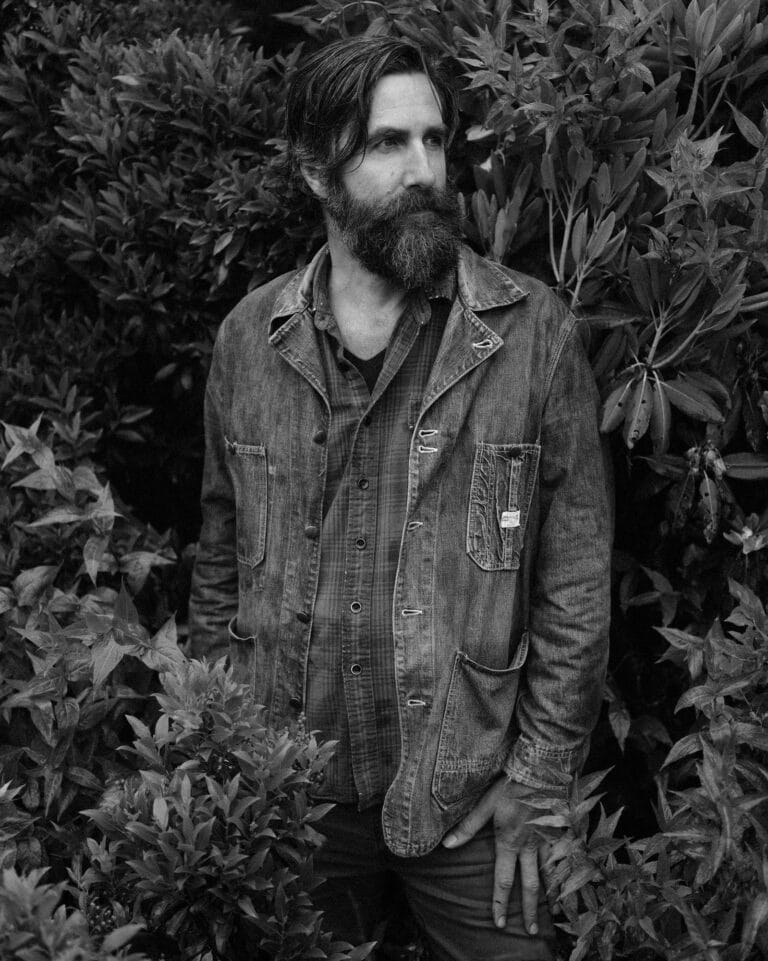Click here to read the whole article

Photo credit: Sarah Vogel
A Different Kind of Granny Witch
No medicine, no hospitals, no doctors. That was life for early European settlers of the Appalachian mountains, and they preferred it that way. The fiercely independent Scotch-Irish immigrants wanted nothing to do with the ruling elite of the northern industrial cities and were willing to face off mountain lions to prove it. Isolated and self-reliant, the settlers had only one option in the face of medical emergency: go fetch Granny.
Granny Women (or Granny Witches) were tough by definition. Surviving until old age meant surviving childbirth, illness, and injury in the most unforgiving landscape of the New World. Safe to assume they knew a thing or two about a thing or two. With no medicine or libraries within reach, they relied on Old World folk wisdom, Cherokee tradition, and their knowledge of the plants and land to take care of their own.
In a way, Appalachia’s ecotherapists are kindred spirits. Though not out of necessity like their counterparts, and with more access to modern amenities, they still hold sacred the healing power that permeates these blue hills. After my experience in the labyrinth at the Edith J. Carrier Arboretum, I knew I needed more answers.

Photo credit: Sarah Vogel
I met with Michele Zehr, formerly a U.S. Marine, M16 rifle instructor, automotive technology professor, and self-defense instructor. Despite the list of impressive accomplishments, however, I hadn’t arranged to interview her about any of that. Zehr left it all behind to pursue what she thinks may be her life-defining work. Founder and Executive Director of the Center for Earth-Based Healing (CEBH), Zehr now dedicates her life to helping trauma survivors. Twice a year, the CEBH hosts weekend ecotherapy retreats free-of-charge for survivors at Douthat State Park in Millboro, Virginia.

Photo credit: Sarah Vogel
“A lot of people have no idea what ecotherapy means,” she said. “Once, someone asked if it involved doing psychedelics in the woods.” She let out a big, warm laugh. “The answer is no. A lot of people get ecotherapy from things they already do without even realizing it. It’s not a foreign thing, it’s just putting a name on something that has been healing us for thousands of years.”
During camp, survivors hike trails, cook, do yoga, make art, and participate in guided activities that heighten their senses. Survivors are invited to take off their shoes and put their feet in the dirt, listen to the sounds of the forest, or taste sassafras if they can find any. I was surprised to learn how simple it was, and how short in duration: only three days.
And yet, the results spoke for themselves, survivors lives permanently changed. One woman overcame injuries she believed were permanent, regaining the ability to hike and do yoga for the first time since leaving her violent marriage. Another woman, originally homeless and unemployed, found a job and her own apartment two months after completing camp.
“There’s magic that happens in those woods and it’s not something that I can truly take credit for,” Zehr said. “That’s Mother Nature.”
But participants do not process their trauma during camp — in fact, they are asked not to talk about it. Talk therapy, Zehr said, is extremely helpful and often necessary to conceptualize and understand traumatic experiences. “But, we are not cognitively processing past trauma at our programs. We create a space to remind survivors and their bodies that you are not there anymore, you are here, in the present moment.”
Healing injuries, solving homelessness? Without physical or talk therapy? I’ll admit it sounded like something you’d hear from a snake oil salesman or a faith healer’s tent. As a mental health professional, my primary goal was to get people to talk. But after my own ecotherapy experience processing the loss of my father without talk therapy, I was ready to believe.
So how does that work? I asked Zehr point-blank: “If participants aren’t processing or talking about the trauma, how do they heal?”
She smiled, surely having heard this question more than once.
“From the neck down.”

Trauma Trapped in the Body
To understand how nature heals, Zehr explained, we had to first understand the meaning of trauma. “It means too much, too fast. Anything that overwhelms our nervous systems and our natural capacity to process something and stay regulated is a traumatic experience. Our body remembers those traumas and holds on to them if we are unable to fully process and integrate the traumatic experience in the moment that it happens.”
I’d heard of this notion at various workshops in the mental health field, of trauma trapped within the body. When a person experiences a threat (emotional or physical), the body revs its engines to prepare for fight, flight, or freeze. The heart races, muscles tense, adrenaline spikes, and breathing quickens. In the case of serious trauma, however, the body might remain caught in a state of arousal long after the threat is gone.
Needless to say, bodies are not meant to function in a highly aroused state for long periods of time. The consequences can manifest in headaches, earaches, insomnia, nightmares, itching and rashes, digestive problems, fatigue, hyperactive behavior, lower immune response, and much more. Trauma affects more than the mind, it can decimate the body.
And before you dismiss this entire section because you believe you’ve never personally experienced trauma, think again. According to the Substance Abuse and Mental Health Services Administration (SAMHSA), over half of all adults and over 60% of men have experienced trauma in their lives. Traumatic events can include rape, domestic abuse, terrorism, war, natural disasters, childhood abuse and neglect, and prison stays. But you may be surprised to find that common life experiences may also be traumatic, like the loss of a loved one (including pets), divorce, illness, and even moving to a new location.
Chronic stress impacts the body similarly to trauma: increased headaches, depression, heartburn, insomnia, rapid breathing, weakened immune system, risk of heart attack, high blood sugar, high blood pressure, gastrointestinal problems, and even fertility problems. If the stressors continue, says the American Institute of Stress: “just as any machine wears out… so do living organisms that sooner or later become the victim of this constant wear and tear.”
Watch an infant sleeping and observe how his belly naturally rises and falls. Most people don’t seem to do this anymore, holding their breath in their chest. When I mentioned this to Zehr, she nodded. “Shallow-breathing — that is, not belly-breathing — is a trauma response. A lot of people don’t realize that you won’t likely get through this life without experiencing trauma at some point, and no two people experience traumatic events in the same ways.”
Survivors
It took Jae De La Mora three years to leave her abusive marriage. When she finally got out, her injuries were so severe she spent most of her time bedridden. “I loved the outdoors, hiking, yoga,” she said. “But I thought it was never gonna happen again.”
She left the state for protection, devastated by the ordeal and clueless about her next steps. A local women’s resource center suggested she apply for Camp Ostara, a retreat for survivors of domestic violence offered by the CEBH. “I really didn’t think it was going to help very much,” she said. “I thought I wasn’t capable — I had gained weight, I had injuries, I was out of shape. I figured, here goes nothing.”
Eden C. felt a similar sense of surrender by the time she was recommended to Camp Mabon, a retreat for survivors of sexual violence. After escaping her abusive marriage of ten years, she and her four year-old son moved across the country where they didn’t know a soul. She had always been the breadwinner, but holding down a job was out of the question now. Just the sound of the doorbell would set off a panic attack. “I wasn’t just homeless,” she said, “I was hopeless.”

Photo credit: Sarah Vogel
Both Eden and De La Mora were apprehensive when they arrived at camp. Eden admits she almost canceled several times, unsure of what to expect, or how it could help. Confined to her home and addicted to social media, she was concerned when informed there would be no cell phone service at camp. When De La Mora arrived at Douthat State Park on a chilly April weekend, snow still coated the ground and the forecast called for freezing rain. Almost in tears, all she could think was, “I can’t do it.”
But at camp, both Eden and De La Mora found a supportive network of fellow survivors and trauma-informed staff. Before starting a long hike, survivors talked about their fears. What are you expecting from this walk, what are you thinking, what are you feeling, what animals are you afraid of? “Everyone came into the woods with some fear and some challenge,” said De La Mora. “I wasn’t alone by a long shot. Nature levels the playing field. It doesn’t matter if you’re rich, poor, disabled — everyone experiences warm, cold, and fear.”
In spite of not talking about her trauma, De La Mora discovered that she didn’t need to explain herself. “Trauma changes you,” she said. “Everywhere you go, you don’t fit. But in this place, you belong.” She learned about other women who had finished the camp with a variety of challenges — one morbidly obese, another woman blind in a leg brace. “If they could do it,” she thought, “I can too.”
Eden specifically remembered the blind woman in the leg brace. As fellow participants of Camp Mabon, they hiked the trails together while Eden served as her guide. She narrated the environment, helping sidestep stones and large roots. On one of the hikes, the woman’s brace broke, and Eden and the staff fashioned an improvised splint using a flannel shirt, duct tape, and trowel. “She wanted to do it,” said Eden. “She just needed a little bit of help.”
“How do you describe the power that is felt between a group of women who have all experienced trauma but never speak about it to each other?” asked Eden. “I’m not sure I can.”
Within two months of completing Camp Mabon, Eden had found an apartment and a new job. Now, she works as the Director of Social Media and Customer Service for a health and wellness company, living in her own home with her son and a loving, supportive partner. Eden still carries scars that remind her of the painful life she once thought she couldn’t escape. Now, she plans to cover each of them with a reminder of the strength she discovered in those woods, the first of which is the emblem for the Center for Earth-Based Healing.

Zehr explained the significance of the image: based on the autumn and spring equinoxes, the time of year with equal parts light and darkness, positive experiences can bring balance to the shadow parts of life.
“In that weekend,” said Eden, “I found the power buried deep inside me. The same power that allowed me to survive for years in a situation that was in all honesty un-survivable. The power that had been lost in pain, depression and hopelessness. I rediscovered the person I was supposed to be, the person I had lost. I found her and I won’t ever let her go.”
Healing from the Neck Down
People have used drugs to cope with emotional problems since the dawn of drugs. But in the 21st century, one of the cheapest, most accessible drugs is information. And I don’t refer to information as a drug for the sake of hyperbole. Literally, our brains treat it the same as a bump of coke. Both give us a pleasant hit of dopamine, our brain’s way of saying “gimme more.”
From an evolutionary standpoint, it’s easy to see why information might be so addictive. More information meant a greater chance of making the right decisions, and thereby a greater chance at survival. But when information is infinite (as it is with the advent of the internet), it can be more of a hindrance than a help. I’m always impressed by the lexicon we’ve created to define our new world and this phenomenon is no different: information overload, infobesity, infoxication. Goofy terminology, but accurate — with the world at your fingertips, gorging on information is the new normal.
TMI is more than an acronym I use when my friends overshare about their sex lives — too much information is a serious problem in the digital age. Reading, talking about, and researching a problem can feel deceptively like doing something about it. In reality, we end up stuck in the purgatory of analysis paralysis, making no decisions at all. And if the problem is emotional trauma, searching for the “right” answer might be the worst mistake you can make.
“We are just animals,” said Zehr. “We are unique animals because we have the capacity to construct buildings, do complex math problems, and write articles. But the shadow side is that we can use these capacities to get around dealing with our stuff. We can dissociate, avoid, suppress. Sometimes we enable avoidance.”
Cognitive-behavioral therapy (CBT), a form of talk therapy, is arguably the most popular form of mental health treatment available now. A therapist specializing in CBT may challenge a survivor’s negative thought patterns, encouraging them to recognize they are safe now, that the trauma was not their fault, and to process their emotions by recounting the experience in a safe environment. Though effective for many people, research is beginning to show that CBT may not be as effective for PTSD, and can even re-traumatize survivors by asking them to relive painful experiences.
As the name implies, CBT relies on cognitive analysis. We want to understand ourselves, to make sense of the world, and discover solutions to our problems. We want information. But when arousal is high, as with anxiety and trauma, logic and executive functioning collapse. From someone who has experienced more than a few panic attacks, telling myself that I wasn’t actually going to die wasn’t convincing because the logical part of my brain had left the building.
Perhaps in the case of treating emotional wounds, logic needs to go out the window. As useful as the human language can be, sometimes we have to stop talking, stop reading, and stop trying to make sense of painful things, because sometimes the answers will come in a form other than words. And in order to find them, we need to get out of our heads and into the real world.
New modalities have emerged in the last few decades to address the limitations of talk therapy. Somatic therapy is one such option, proven to be effective in treating anxiety, depression, chronic stress, addiction, and other mental disorders. The goal of a somatic therapist is to help the client identify and release physical tension stored in the body after a traumatic event.
At the Center for Earth-Based Healing, participants didn’t talk about their trauma. They hiked trails, did yoga, ate oranges in the forest, practiced breathing, put their feet in the water, hugged trees. They immersed themselves in sensory experiences. I noticed some overlap between somatic and ecotherapy, perhaps because they both demonstrate that you don’t always need to poke around in the mind in order to heal trauma.
“A lot of the magic of ecotherapy is nervous system regulation,” said Zehr, who has received training in Somatic Experiencing through Dr. Peter Levine’s SE Trauma Institute. “Our minds may not completely pick up on what’s going on. But our bodies do. When we go outside, our body is like, ‘Oh, there I am,’ because our bodies are made of the same elements from which the Earth is made. In a sense, the body calms because it recognizes itself in nature. And when the body is calm, it opens the mind to things that are often painful, things we avoid. Things like introspection and growth.”
After my father died, I remained trapped in a never-ending to-do list in my mind. The list was rigid, it had rules, it had deadlines, it made sense. But it kept me from feeling anything, probably as my subconscious had intended. In the labyrinth, I had no logic to fall back on, no rules to abide. But I felt the numbing cold in my fingertips, felt the vicious wind batter my face, felt the exhaustion in my arms as I carried that heavy stone. And I felt relief when I let it go.
Maybe it was the relief to finally feel what I had been avoiding for so long — the pain of knowing life sucks sometimes and there is absolutely nothing to be done about it. No amount of analysis or preparation would protect me. And yet, somehow, I would still be okay.
Maybe. But for once, I’m going to try to stop putting it into words.
Said Zehr, “Mother Nature is trying to show us all the time what we need to do to heal ourselves, but she doesn’t speak in our language. We have to learn how to listen with both our minds and our bodies.”
—
Since this article was written, the Center for Earth-Based Healing‘s primary source of funding (a federal grant) was discontinued due to a lack of available grant funds. If another reliable and sustainable funding source can not be found in 2020, the Center for Earth-Based Healing will be closing its doors.








